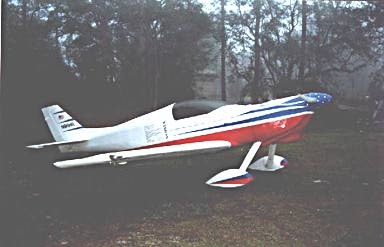December 14 2021
This is the last day that I have been able to do work on the plane. The weather here in Calgary Alberta has gone totally downhill and is forecast to stay at -25c for at least three weeks. As I write this it is now January 3 and we are still in the -20-25c for another seven days. I don't bother to work on the plane in these temperatures as it is to hard to heat up the hangar for comfortable working conditions. I am getting to old for this cold weather and so it sets me back in my progress. November and the first half of December I spent again on finishing wiring to all components and then tested every piece of electrical one at a time. Amazingly I found every piece worked properly. The wiring is not yet tidied up and bound together in bundles since I wanted everything accessible in case wires had to be traced for problems. When I get back out that will be one of the next items tackled.
Below are 4 of the five LED emergency warning lamps that I made up to annunciate the following, Aux warning lamp for the Dynon engine management system, Fuel Pump On warning, Pitot Heat On, and two spares.
Below is my ARTEX 406 ELT installation just aft of the baggage compartment, with the antenna in view and the copper tape ground plane antenna. Towards the aft end is the Transponder antenna protruding through the bottom of belly and the hex shaped ground plane for it. The black box is my ADAHRS unit driving all flight instruments for the Dynon screen.
Below the Dynon main screen and the Dynon Radio head unit are tested.
Below is my Dynon 10 inch screen which is showing the flight instruments and the engine management screen. I also have a GPS moving map screen that is hidden in this photo. My normal screen will show a large flight data screen on left with a narrow engine monitor screen centre and a large moving map screen on right.
The list of electrical items tested:
Dynon screen, Radio, Radio head, Engine monitor and Transponder.
Pitot heat, Navigation lights, Strobe lights.
Power to capacitance fuel level senders.
ELT unit test.
Flaps test, Trim Servo test.
Below are the blisters I had to fabricate on the wing Root fairings at the aft end. The style of Slotted Flap have the drive mechanism from the torque tube rotate above the trailing edge of the wing root. I will later supply a photo of the wing root fairing installed showing the fiberglass blister completed. Also had time to build a small 10 in. by 4 in. removable wall that will protect the flap motor from any contact with baggage, this is behind the seat back. No photo.





















































